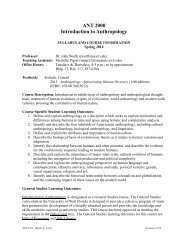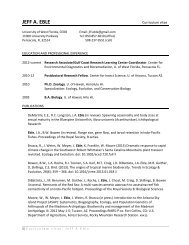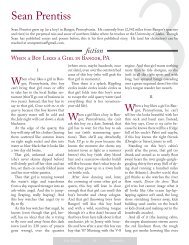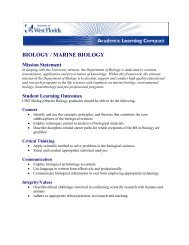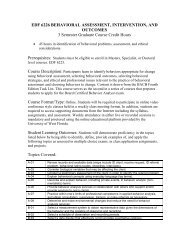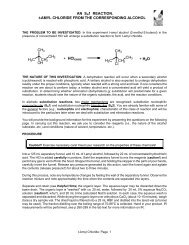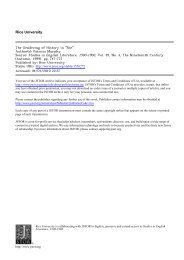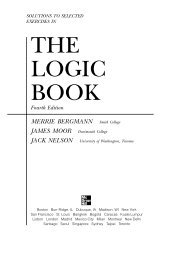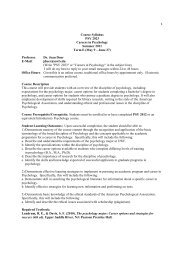1 Experiment #2: Telescopes And Microscopes Purpose: To ...
1 Experiment #2: Telescopes And Microscopes Purpose: To ...
1 Experiment #2: Telescopes And Microscopes Purpose: To ...
Create successful ePaper yourself
Turn your PDF publications into a flip-book with our unique Google optimized e-Paper software.
and evidently the objective must be weaker (i.e., have a longer focal length) than the eyepiece in<br />
order to give magnification (M > 1).<br />
The astronomical telescope produces an inverted image, which is okay for looking at stars<br />
but inconvenient for use on land. So for the latter purpose, a terrestial (or Galilean) telescope can<br />
be employed instead, resulting in an erect image. A terrestial telescope is constructed using a<br />
diverging lens for the eyepiece rather than a converging lens, as shown in Fig. 5 below.<br />
objective<br />
f obj<br />
Fig. 5. Terrestial telescope<br />
This figure assumes that you are looking at an object which is very far away (i.e., near infinity so<br />
that the incoming rays are very nearly parallel). The resulting image is also at infinity, which<br />
corresponds to the relaxed eye position. Note that f obj > 0 for the converging objective lens, while<br />
f eye < 0 for the diverging eyepiece. The total angular magnification of the telescope is, just as for<br />
the astronomical telescope,<br />
M = f obj<br />
f eye<br />
so that we again require the objective to be weaker (i.e., have a longer focal length) than the<br />
eyepiece in order to give magnification. Also, the distance L between the two lenses is again<br />
approximately equal to the sum of their focal lengths, but since f eye < 0, this means that the lens<br />
separation equals the difference in the absolute values of their focal lengths, L = |f obj| – |f eye|. Thus,<br />
an added advantage of the terrestial telescope is that it is more compact than the astronomical<br />
telescope.<br />
Finally, in a microscope a small object is placed near, but just beyond, the focal point of the<br />
objective so that an enlarged, real, inverted image I is formed, which becomes a real object O' for<br />
the eyepiece. The eyepiece then acts as a simple magnifier, as in the astronomical telescope, to<br />
produce a final image I' which remains inverted—cf. Fig. 6 below. If s is the distance between<br />
the focal points F obj and F eye', while h o and h i are the heights of the object and image produced by<br />
the objective, then the lateral magnification of the objective is<br />
m obj h i<br />
h o<br />
6<br />
= s<br />
f obj<br />
eyepiece<br />
f eye<br />
eye



